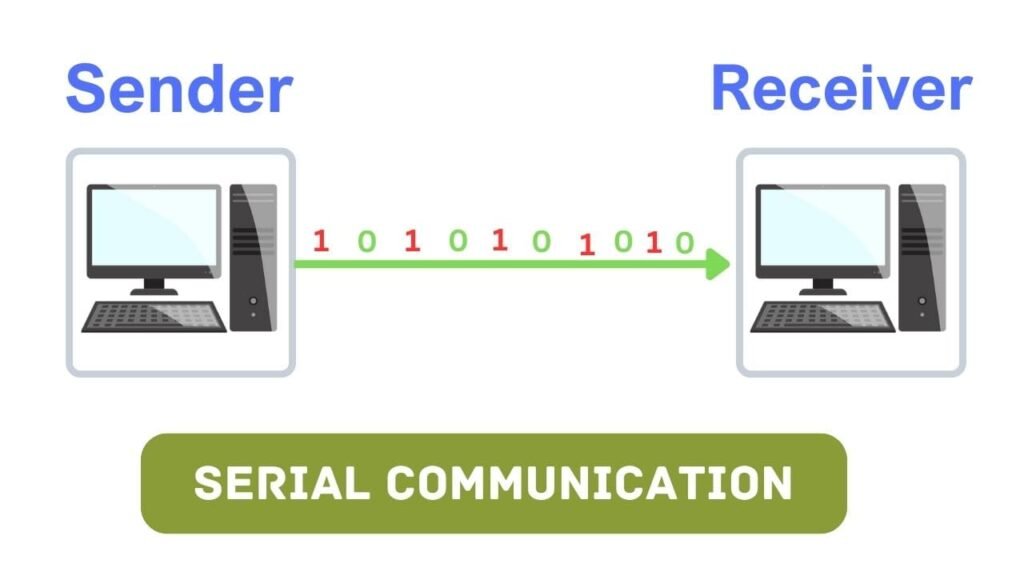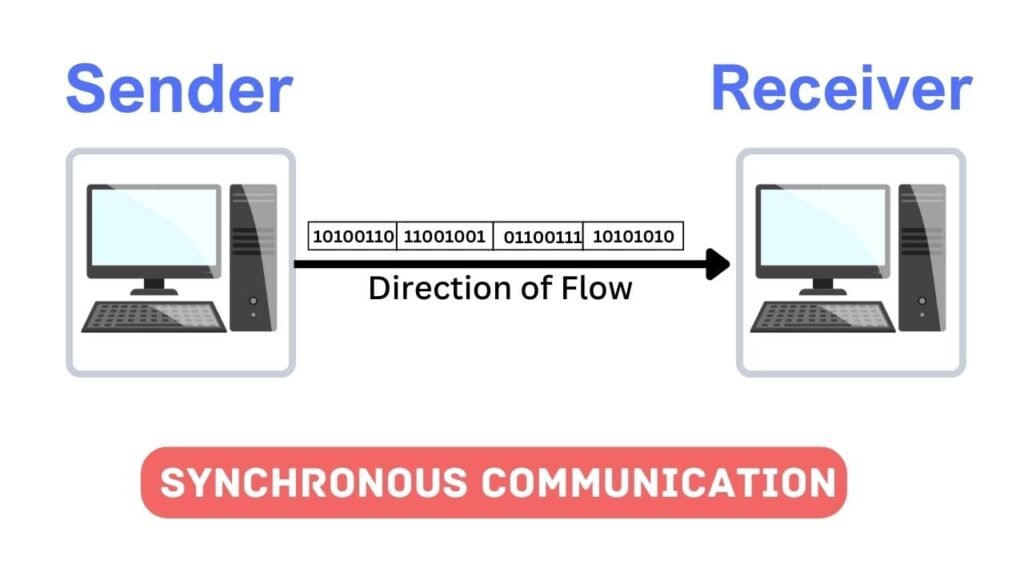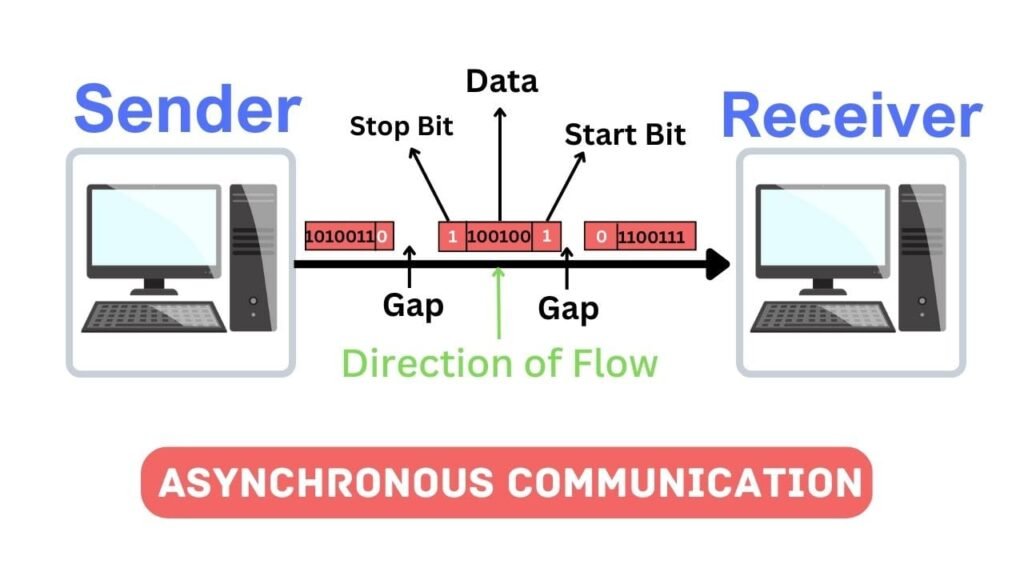Table of Contents
What is Data Transmission
Data transmission refers to the process of transferring analog or digital data between two or more devices. The data can be transferred from one device to another device in a point-to-point, point-to-multipoint, or in multipoint-to-point environment and the data is transferred in the form of the bitstream. It is known as “Data Transmission “ or also known as “Digital communication”
In Data Transmission, It provides the communication between two devices, for that we have to provide a connection between an input/output device or with other components of the computer via communication channels such as (physical copper wires, wireless carriers, and optical fiber), etc. so that they both can be able to communicate over the medium of a network.
Let me example this with a simple example: suppose there is an input device: a keyboard and an output device is a monitor, So to provide communication b/w these two devices first we have to connect these devices with the communication channel via cable or wireless. Now, the keyboard and monitor are both connected successfully, so they can now able to interact with each other like when we enter something in a keyword the data we typed in the keyword is transmitted to the monitor in the form of a bit and when will the data successfully reached to the monitor then it will display on the monitor screen. The transferred data can be in analog and digital format.
Types of Data Transmission
Data transmission, there are two types of transmission:
- Parallel Transmission
- Serial Transmission
- Synchronous Transmission
- Asynchronous Transmission

Parallel Transmission
Parallel Transmission refers to the process of sending multiple data parallelly at the same time over multiple channels known as “Parallel Transmission”. In this type of transmission, each node required each channel for the transmission and it is much faster than the serial transmission.

Advantages of Parallel Transmission
- Transferring speed of data is fast.
- This type of transmission is best suitable for short-distance communication.
- A lump sum amount of data can be sent easily.
- It matches the system’s internal hardware as well.
Disadvantages of Parallel Transmission
- It is costly due to the requirement of channels on each node.
- It is not suitable for long-distance communication.
Serial Transmission
In serial data transmission, Multiple data can be sent over a single channel one after another known as “Serial Transmission”. At the time of transmitting the data from sender to receiver that time each node does not require multiple channels, in this case, it can be sent with a single communication channel. When the first node is sent over the single channel then the second node turn next to send from the sender to the receiver over the channel.

Advantages of Serial Transmission
- It is cost-effective transmission where only a single communication channel is required.
- It is suitable for short and long-distance communication.
Disadvantages of Serial Transmission
- It takes time while transmit the data
- The technology used in this type of transmission is old which is one bit at a time.
In serial transmission, there are two types:
- Synchronous Transmission
- Asynchronous Transmission
Synchronous Transmission
In synchronous transmission, It is the method of sending a huge amount of data in the form of blocks (each block has many characters). The data is transmitted in a full duplex method where the sender and receiver both can get the data at the same time. It is known as “Synchronous Transmission”.

Advantages of Synchronous Transmission
- Huge amount of data can be sent
- It reduces the timing error
- It provides real-time communication
Disadvantages of Synchronous Transmission
- To communicate successfully, both the sender and receiver must use the same clock frequency simultaneously.
- The accuracy level of the data received relies on how effectively the receiver can count the bits it has received.
Asynchronous Transmission
In asynchronous communication, only one character at a time is sent. If a character is a number or an alphabetic letter. It uses start and stops bits for transferring the data. it is known as “Asynchronous Transmission”.

Advantages of Asynchronous Transmission
- It is easy to implement
- It’s a very flexible technique for the transmission of data.
- There is no need to synchronize the sender and the receiver.
- When data byte transmission is available, data transmission can resume.
Advantages of Synchronous Transmission
- It is difficult to determine synchronization.
- transferring of information is slow
- Start and stop bits require additional information, which increases the size of the transmitted data.
Difference between Synchronous Transmission and Asynchronous transmission
| S. No. | Synchronous Transmission | Asynchronous Transmission |
|---|---|---|
| 1. | In synchronous transmission, a lot of data is sent in the form of blocks or frames, and in each block contains many characters. | In asynchronous transmission, only one character is sent over a specific time whether that is a character or an alphabetical letter. |
| 2. | Synchronous transmission is fast. | Asynchronous transmission is slow. |
| 3. | Synchronous transmission is expensive. | Asynchronous transmission is cheap compared to synchronous. |
| 4. | The time interval of transmission is constant. | The time interval of transmission is random |
| 5. | In Synchronous transmission, there is no gap present between data. | In Asynchronous transmission, there is a gap present between data. |
| 6. | In Synchronous transmission, there is no need to use the synchronized clocks method. | In Synchronous transmission, there is no need to use the synchronized clocks method |
Difference between Serial Transmission and Parallel transmission
| S.NO | Serial Transmission | Parallel Transmission |
|---|---|---|
| 1. | It refers to the process of sending multiple data parallelly at the same time over multiple channels | In serial data transmission, Multiple data can be sent over a single channel one after another |
| 2. | The flow of data is bi-directional | The data flows in multiple lines. |
| 3. | Serial Transmission is expensive. | Parallel Transmission is economical. |
| 4. | The circuit used in Serial Transmission is simple. | The circuit used in Parallel Transmission is relatively complex. |
| 5. | Transmission of data is slow | Transmission of data is fast |
| 6. | It is suitable for long-distance | It is suitable for short-distance |
| 7. | It is Required to convert the signals according to the need. | It is required to convert the signals according to the need. |